Tool Cabinet – Building the Box(es)
The tool cabinet is really three big boxes, one being the main box of 48″x42″x14″, and the two outer hinged boxes are each 48″x20-1/2″ x 4″. I built the big box first and outsmarted myself some, a lesson I learned in time to change the way I built the two door boxes.
Beginning with four pieces of 48″x24″x3/4″ Baltic birch-ish plywood panels from the big box store, I ripped them all to 14″ wide and sawed rebates on the back edges to accept the 1/2″ back panel. I ripped a fifth 3/4″ panel to be 1/2″ narrower than the outer box elements in order to allow for the 1/2″ back panel since it serves as the center stile.

It was at this point when I outsmarted myself and wasted a lot of time to no great purpose when I decided to miter the corners. This was simply unnecessary and a step I avoided when building the matched door boxes. Given the set-up of my shop the only way I could cut miters on the ends of the box panels was to use my battery-powered circular saw, which is an excellent tool that works just fine. The time sink was in getting the 45-degree cut just right in order to accomplish the 90-degree corner. After some test cuts I got it right and had the four outer panels ready for assembly.
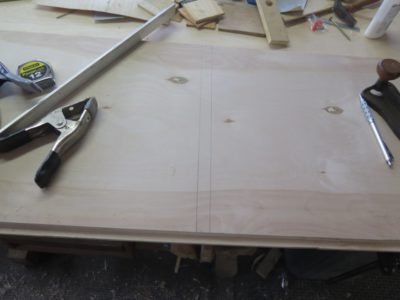
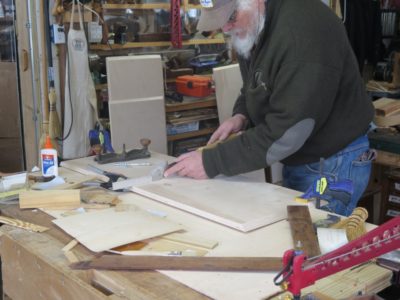
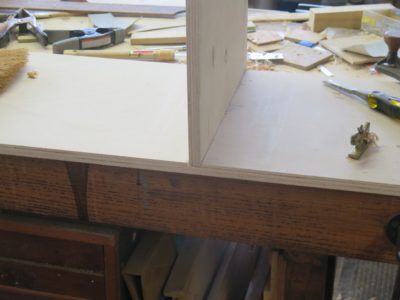
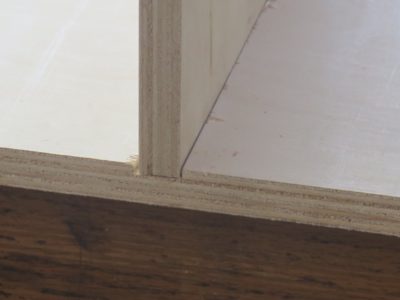
Once that was done I cut the dadoes in the top and bottom panels to receive the interior center vertical panel, cutting the shoulders with a Japanese saw, excavating with a router plane then finishing it off with a small dado plane.


I assembled the back panel from two pieces of 48″x24″x1/2″ plywood, using PVA adhesive and pinch dogs to hold the together while the adhesive sets. Pinch dogs are one of the treasures I discovered in the pattern shop, along with using nails and screws for clamping stacked elements together for painted curvilinear structures. In this case it’s not painted stack laminations, but the surfaces will be obscured entirely by veneerwork.



With all that complete the entire structure was assembled using PVA adhesive (I cannot assure that the tool cabinet will always be in the best atmospheric environment) and deck screws. I chuckle with the gasping and pearl clutching I am sensing out in the fruited plain. I augmented the corners with full-length mitered glue bocks using nails and PVA.
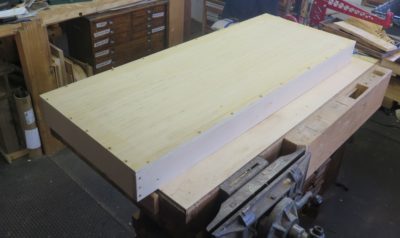
I learned my lesson with the bog box so I assembled the doors with butt joints and glued-and-screwed.
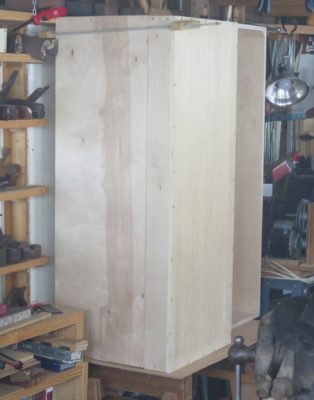
Whew, all the pieces fit together. The thing is so big I shoulda called it “the tool closet.”


You already have a tool closet, the barn.